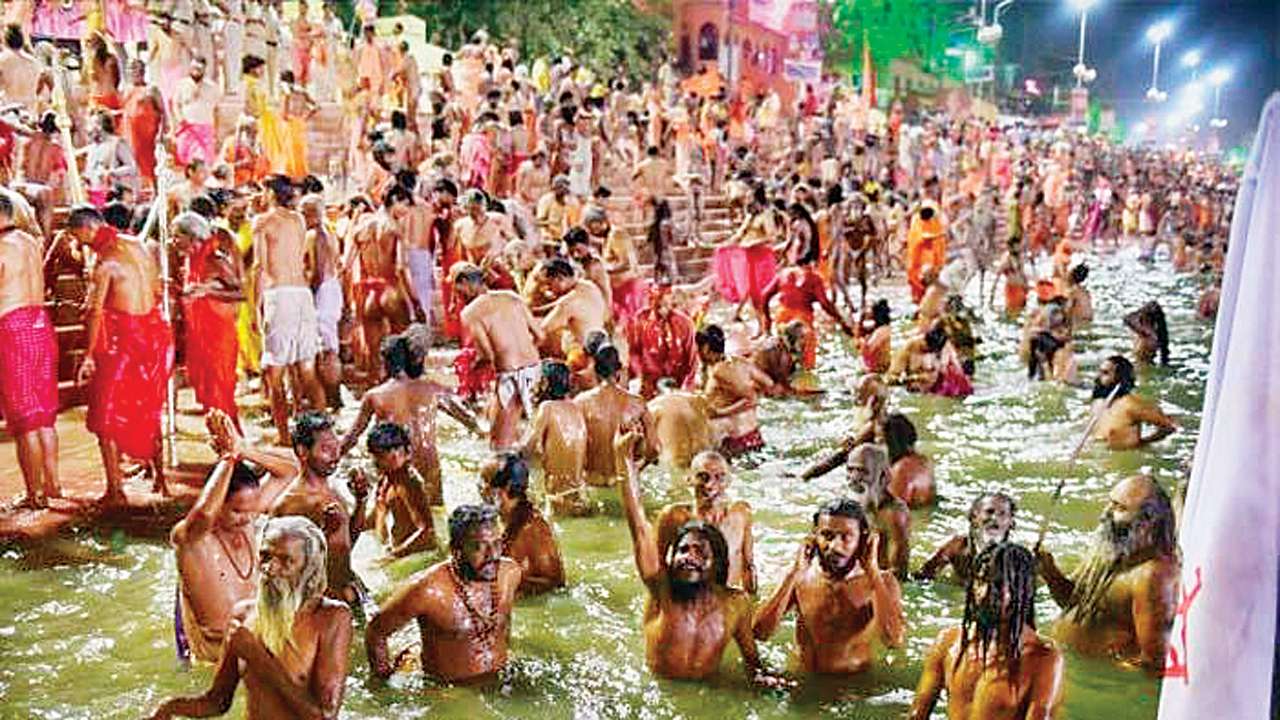|
Akhara & Hinduism
Akhara word is often heard during kumbh but masses rarely know about it. Their strength is showcased in the Kumbh Mela, held every twelve years in each of the four cities — Allahabad, Haridwar, Nasik and Ujjain—which commands worldwide media attention, particularly the bathing procession of naked Shaiva sadhus. The akharas get priority to take dip in Ganges during Kumbh & Mahakumbh according to the seniority. What is Akhara: An akhara is a communal religious monastery. Members of an akhara bear allegiance to the same guru and follow similar modes of worship. As members have renounced the world, arrangements for their boarding and lodging are made by the akhara. The saints of the akharas don’t make discourses. Who founded Akharas: Jagat guru Sri Adi Shankaracharya founded seven Akharas in 8th century to protect Hinduism. He inspired his followers to study weaponry because he believed it strengthens the mind. Why founded Akharas: Traditionally, akharas are known as wrestling pits but through Shankaracharya’s teachings they came to be seen as the centre of debates and religious discussions. In order to protect Sanatana dharma, the king used to seek the help of Naga sannyasis, then give them the estates of some villages. The Akhil Bharatiya Akhara Parishad (ABAP) is the apex organisation of Hindu Sadhus and Saints who work for the preservation of Hindu religion and culture. In 1565, Madhusudan Sarasvati started preparing akharas as an armed military force to resist invasions and protect Hindus. ABAP has taken the following decisions recently:
How many Akharas: Mahanirvani, Niranjani, Juna, Atal, Avahan, Agni and Anand Akharas set up by Sri Shankara later divided into 13 Akharas according to beliefs. These Akharas are grouped into three – Shaivites (7), Vaishvanites (3) and Sikh (3). Shaivite Akharas: Shaiva akharas include Juna, Mahanirvani, Niranjani, Atal, Anand, Awahan and Agni. In the first six Akharas, caste is not a barrier for new entrants. The ascetics of Agni Akhara claim themselves as Brahmacharis, from the Brahmin caste. These Shaiva ascetics are also called Dashanami--literally meaning “ten names” or lineages said to have been started by the disciples of Adi Shankara, 8th century’s Hindu philosopher. These lineages—Aranya, Ashram, Bharati, Giri, Parvata, Puri, Saraswati, Sagara, Tirtha and Vana—are reflected in the names of sadhus of all the seven Shaiva or Dashanami akharas. They wear saffron coloured clothes.
Vaishnavite Akharas, also known as Bairagi or Vairagi: Vaishnava Akharas are founded by the 14th century philosopher Ramanandacharya. Nirvani, Nirmohi and Digambari are the three major akharas of the Ramanandi order, and all have their principal seats of power in Ayodhya, considered central to their theology as it is believed to be Lord Rama’s birthplace. They wear white clothes.
Sikh Akharas: They wear black clothes. 1. Shri Panchayati Bada Udasin Akhada - It has its headquarter at Pryagraj. They follow the teachings of Sri Chand, the elder son of Guru Nanak. It was founded in 1825 by Yogiraj Shree Nirvandev ji Maharaj in Haridwar. The sect worships Jagatguru Bhagwan Shree Shreechandra Ji. 2. Shri Panchayti Naya Udasin Akhada – It has its headquarter Haridwar. It was formed by Mahant Sudhir Das in 1846 following a dispute with the Shri Panchayati Bada Udasin Akhada. 3. Shri Nirmal Panchayati Akhada (Haridwar): They follow Nirmal Sampraday. It was founded in 1856 in Punjab by Durga Singh Maharaj. The akhada has close ties with Sikhism, especially Khalsi Sikhs. Guru Gobind Singh had sent a batch of five saffron robe seers (Panch Nirmal Gaurik) to learn the Vedas, Vedang and Dharma-shastra to Varanasi. However, after learning, these seers are believed to have formed their own sect by the name of Nirmal Sampraday. The akhara was established at Kankhal near Haridwar.
0 Comments
|
Archives
March 2022
Categories |

 RSS Feed
RSS Feed